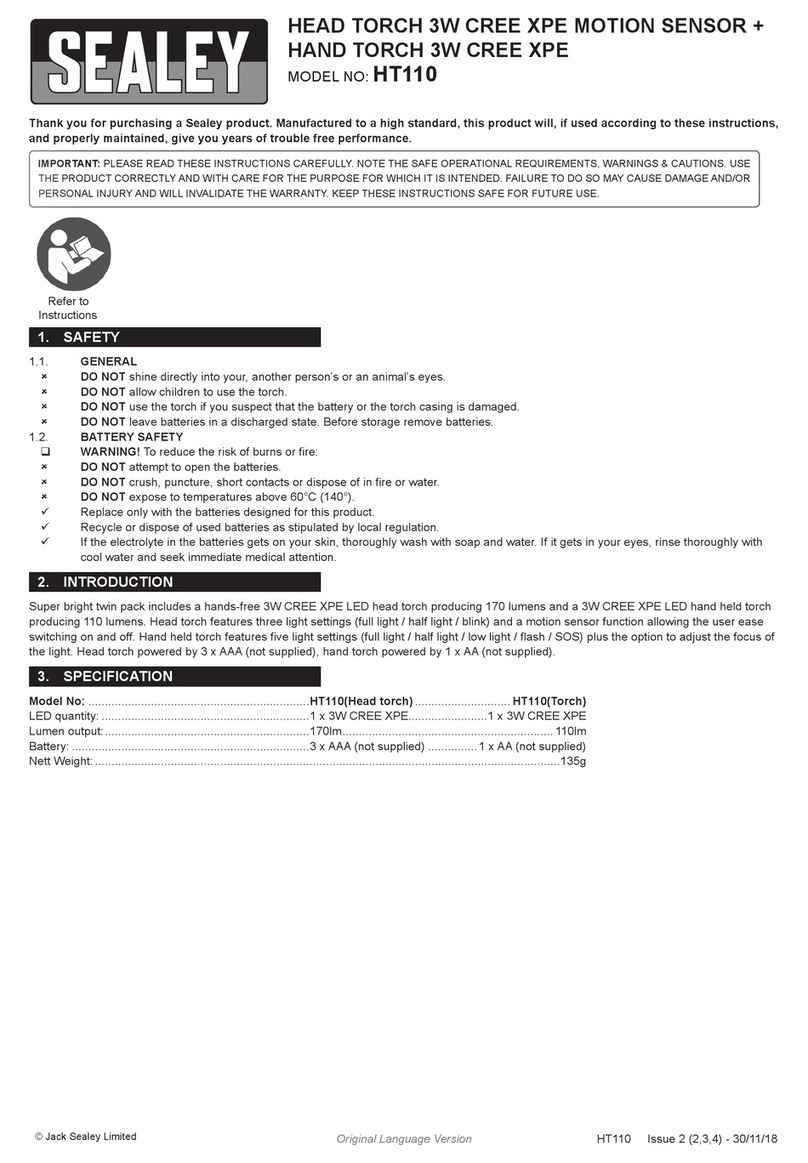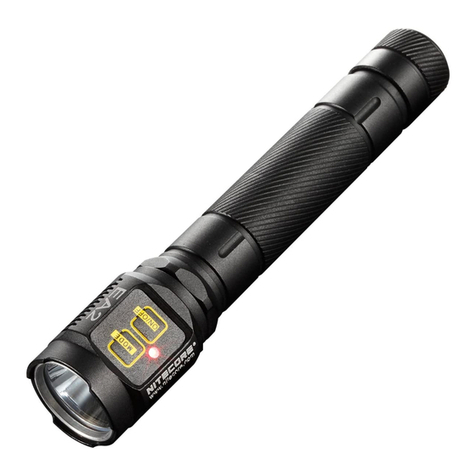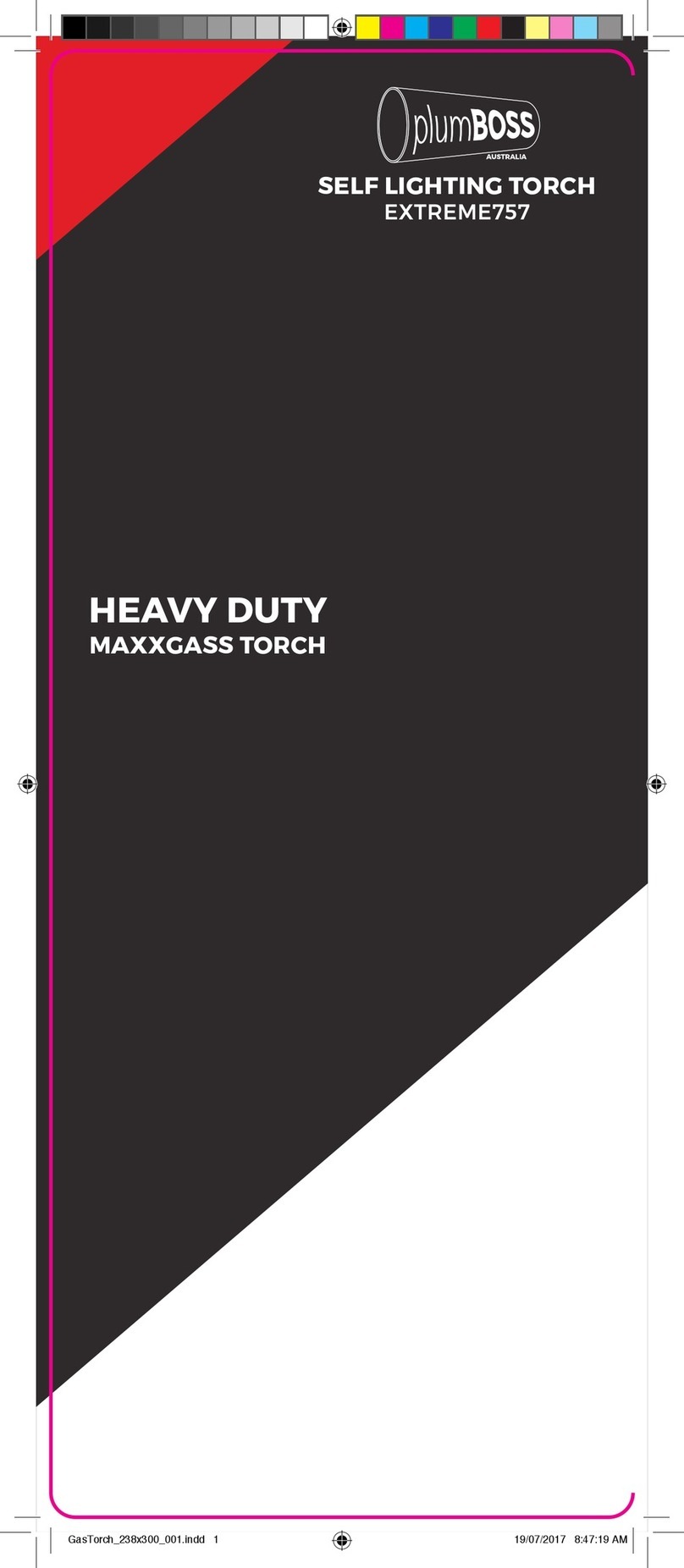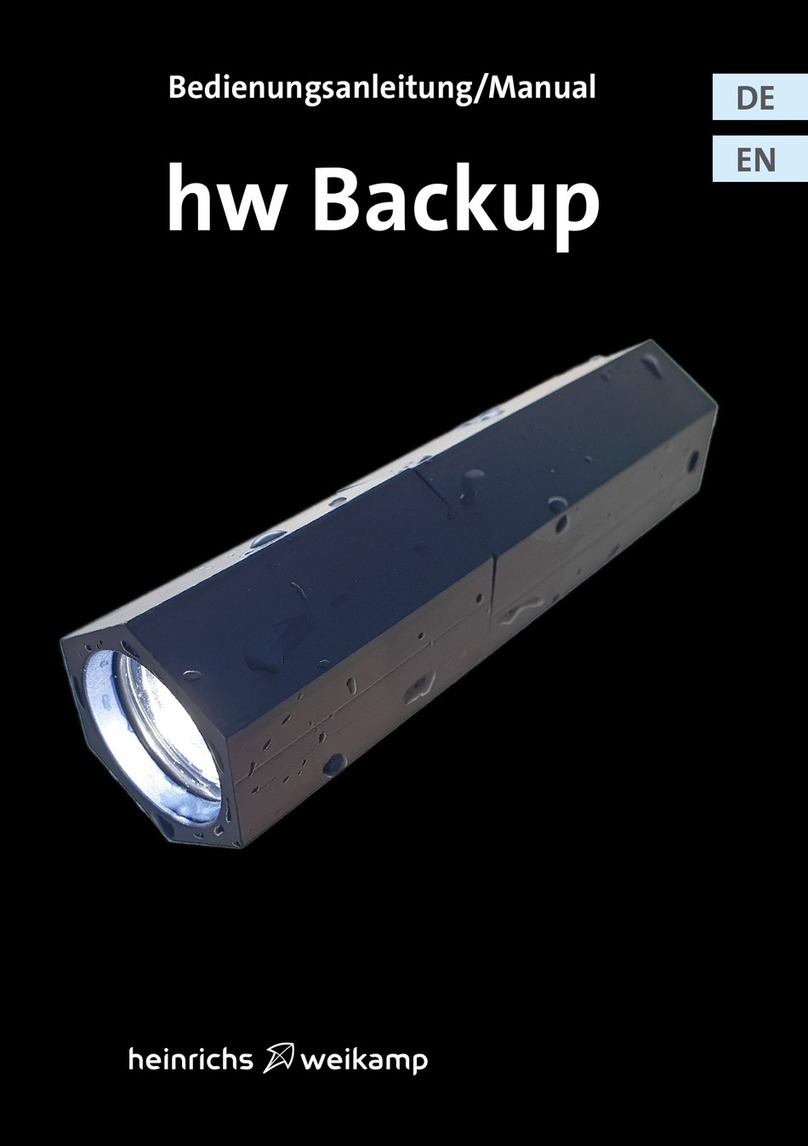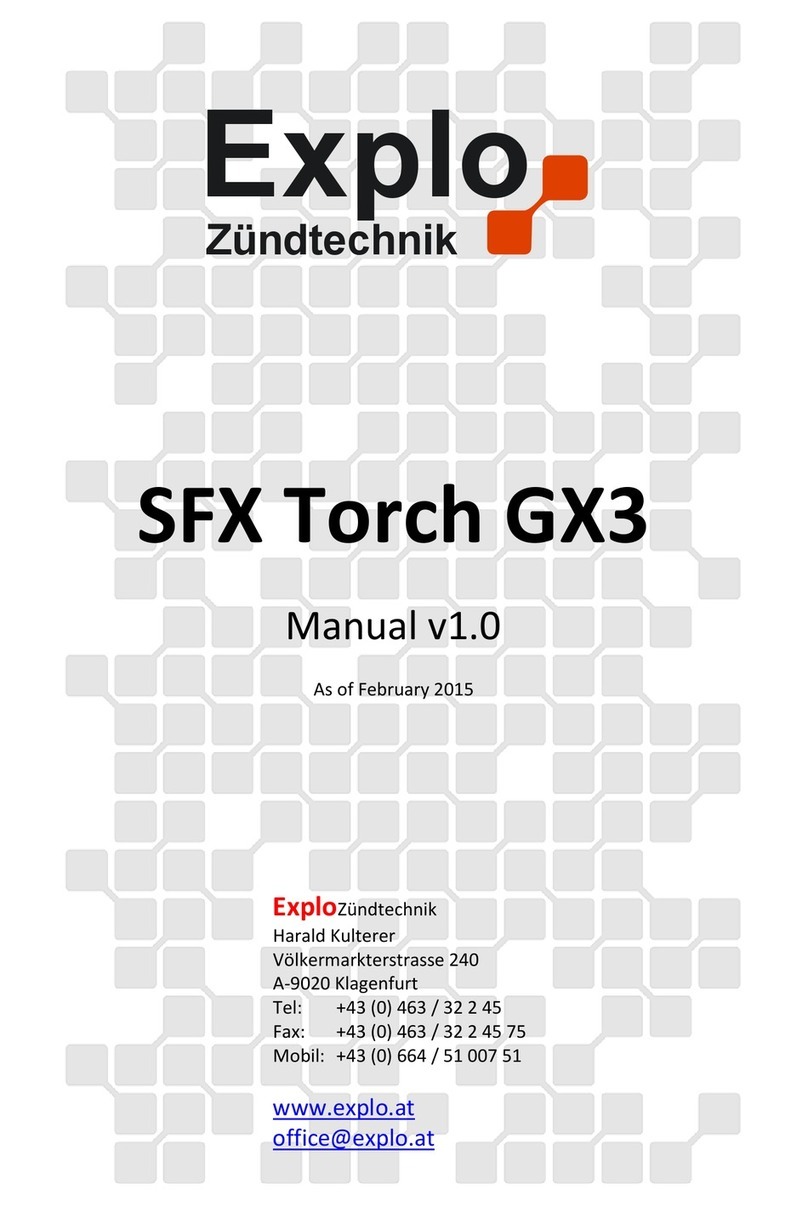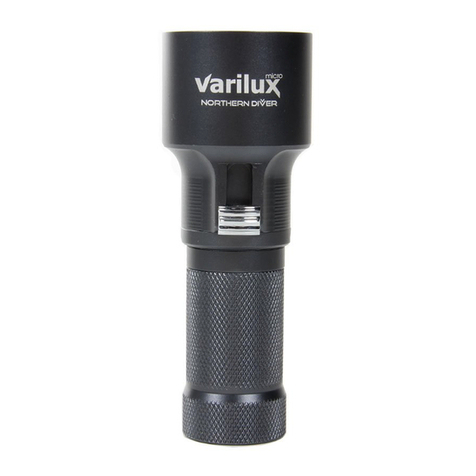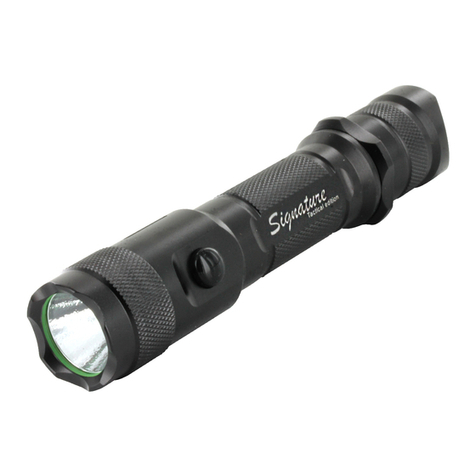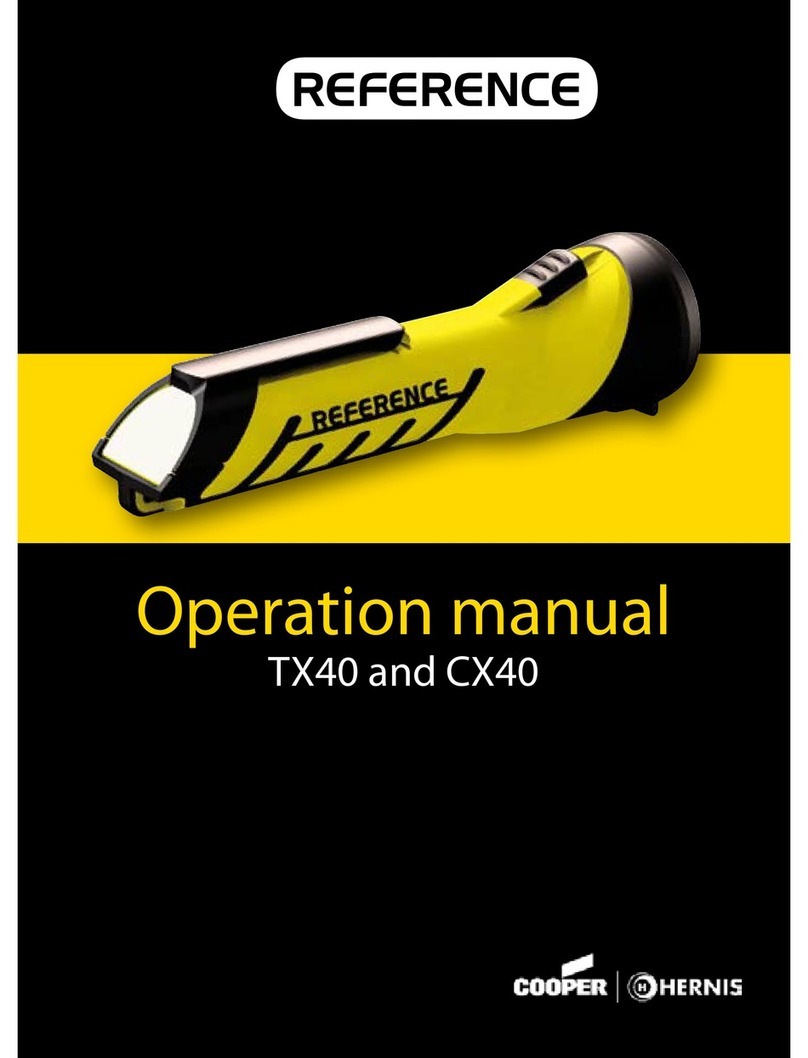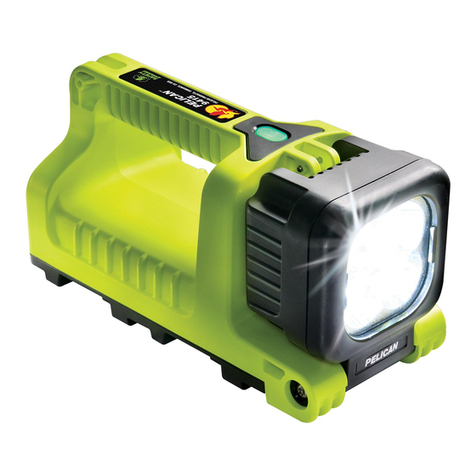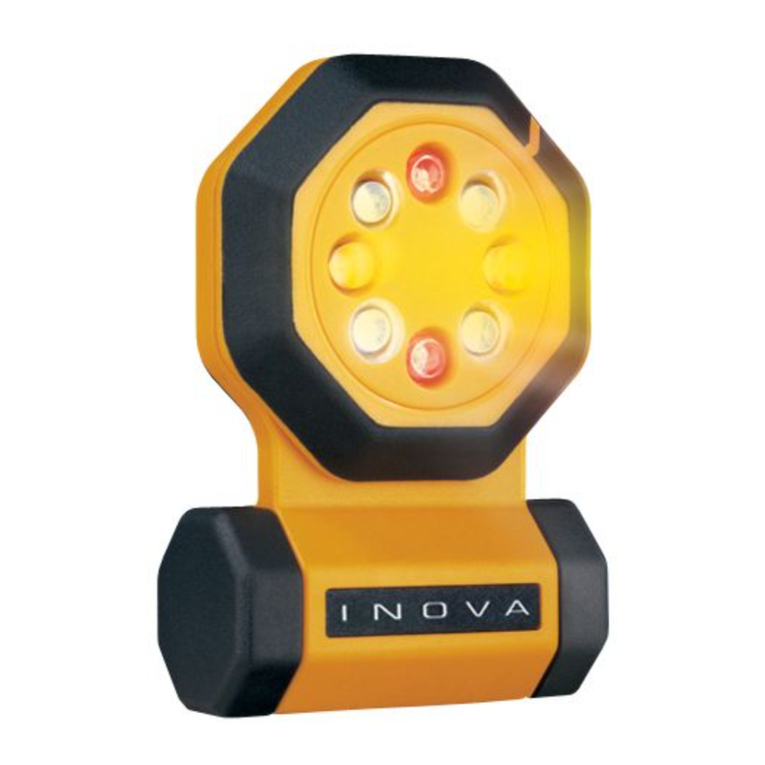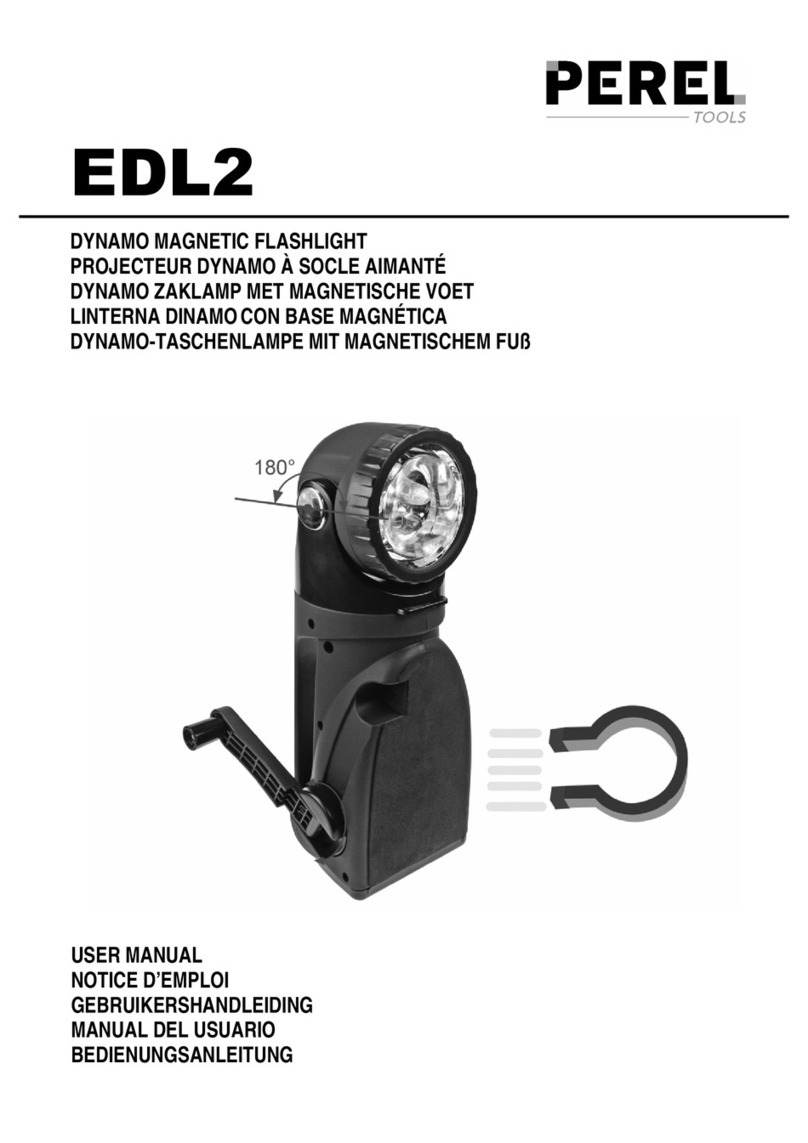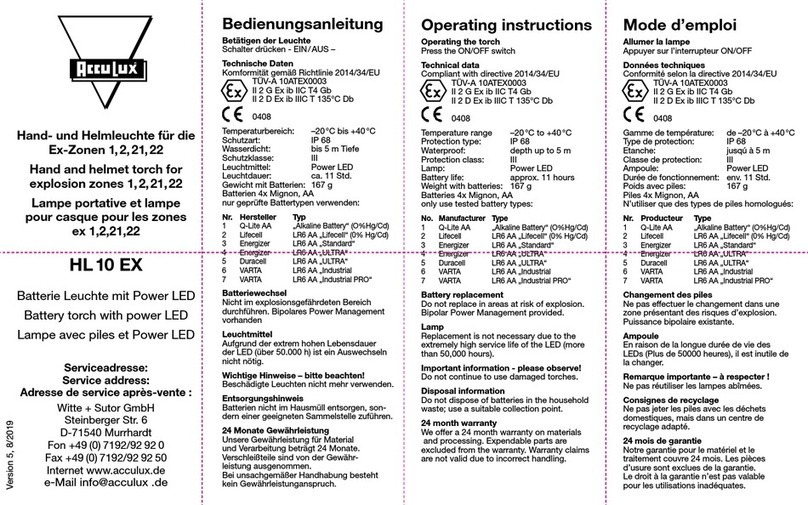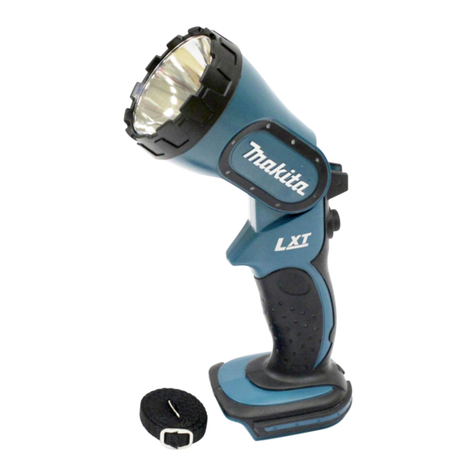Bistos BT-410 User manual

BT-410
Head-worn light
Operation Manual
Keep this manual for future reference
P/N : 410-ENG-OPM-EUR-R07
BT-410

BT-410 Operation Manual 1
P/N:410-ENG-OPM-EUR-R07
Bistos Co., Ltd.
2018,03
Proprietary Material
Information and descriptions contained in this manual are the property of Bistos
Corporation and may not be copied, reproduced, disseminated or distributed without
express written permission from Bistos Corporation.
Information furnished by Bistos Corporation is believed to be accurate and reliable.
However, no responsibility is assumed by Bistos Corporation. For its use or any
infringements of patents or other rights of third parties, that may result from its use. No
license is granted by implication or otherwise under any patent or patent rights of Bistos
Corporation.
Revision 07
Mar,2018
Copyright © Bistos Corporation 2015. All rights reserved.
7th FL., A Bldg., Woolim Lions Valley 5-cha, 302,
Galmachi-ro, Jungwon-gu, Seongnam-si, Gyeonggi-do, Korea
Telephone: ++82 31 750 0340
Fax: ++82 31 750 0344
Printed in Korea

BT-410 Operation Manual 2
P/N:410-ENG-OPM-EUR-R07
Bistos Co., Ltd.
2018,03
Table of Contents
1. Safety …………………………………………………… 3
1.1 Instructions for the Safe Operation and Use of the BT-410 .……… 3
1.2 Warnings ……………………………………………………… 3
1.3 Cautions .…………………………………………………… 3
1.4 Definitions of Symbols ………………………………………… 5
2. Introduction .…………………………………………… 6
2.1 General ………………………………………………………… 6
2.2 Brief Device Description ……………………………………… 6
2.3 Intended Use .………………………………………………… 6
2.4 Contraindication .……………………………………………… 6
2.5 Essential performance ………………………………………… 6
2.6 Product Features .…………………………………………… 7
2.7 Product Configuration ……………………………………… 7
3. Assembly and Operation …..…………………………… 8
3.1 The overall panel .……………………………………………… 8
3.2 Loupe (Optional) Assembly ……………………………………… 9
3.3 Astral Lamp (Optional) Assembly .………………………………… 10
4. Use Method .…………………………………………… 11
4.1 Adjustable headband ...………………………………………… 11
4.2 Turn on the power Method ……………………………………… 11
4.3 Adjust distance of focusing light(only for standard)………………… 11
4.4 Turn off the power Method ..………………………………… 11
4.5 Adjust intensity of light(only for “Optional Main body”)…………… 11
4.6 Charging Method ...…………………………………………… 12
4.7 Charger operation ....…………………………………………… 13
4.8 Optional Features ……………………………………………… 13
5. Maintenance and Cleanliness .………………………… 14
5.1 Checking the Light Intensity ..………………………………… 14
5.2 Cleaning …………………………………………………… 14
5.3 Battery Disposal and Handling …..……………………………… 14
6. Troubleshooting ………………………………………… 15
7. Specifications …………………………………………… 16
8. Manufacturer’s declaration on EMC ………………… 18
Product guarantee …………………………………………… 22

BT-410 Operation Manual 3
P/N:410-ENG-OPM-EUR-R07
Bistos Co., Ltd.
2018,03
Section 1
Safety
1.1 Instructions for the Safe Operation and Use of the BT-410 .
Before administering BT-410, read all section of this manual carefully.
Observe all precautions to ensure the safety of the patient and those near the
instrument.
Do not attempt to service the BT-410. Only qualified service personnel should
attempt any needed internal servicing.
1.2 Warnings
WARNING: Identifies conditions or practices that might present danger or possible
injury to the patient and/or user.
CAUTION: An instruction that, if not followed, can result in a condition that could
damage the light.
WARNING: Do not attempt to connect or disconnect a power cord with wet hands.
Make certain that your hands are clean and dry before touching a power cord.
NOTE: Background information provided to clarify a particular step or procedure.
WARNING: Incorrect use of the light or the use of parts and accessories that are
not manufactured of supplied by Bistos Corporation can damage the light, and may
cause injury to the user.
WARNING: Do not use the light in the presence of gases that support combustion
(for example, oxygen, nitrous oxide, or other anesthetic agents).
WARNING: Do not use the light while recharging the battery. Using the light
while recharging the battery may cause injury to the user.

BT-410 Operation Manual 4
P/N:410-ENG-OPM-EUR-R07
Bistos Co., Ltd.
2018,03
1.3 Cautions
General Precaution on Environment
Do not keep or operate the equipment under the environment listed below.
Avoid
placing in an area
exposed to
moisture. Do not
touch the equipment with wet
hand.
Avoid exposure to direct
sunlight
Avoid placing in an area
where
there is a high
variation of temperature.
Operating temperature
ranges from 10°C to 40°C.
Operating humidity ranges
from 5% to 85%.
Avoid in the vicinity of
Electric heater
Avoid placing in an area
where there is an excessive
humidity
rise or ventilation
problem.
Avoid placing in an area
where
there is an excessive
shockorvibration.
Avoid placing in an area
where chemicals are stored
or where there is in danger
of gas leakage.
Avoid du
st and especially
metal material into the
equipment.
Do not disjoint or disassemble
the equipment.
BISTOS Co., Ltd. does not
take responsibility of it.
The equipment should
not be connecting to the
power while used.
May cause it may cause
damage to equipment
CAUTION: Do not operate the unit if it is damp or wet because of condensation
or spills. Avoid using the equipment immediately after moving it from a cold
environment to a warm, humid location..
CAUTION: The relevant law restricts this device to sale by or on the order of a
physician.
CAUTION:
-The equipment conforms to Class A according to IEC/EN 60601-1(Safety of
Electric Medical Equipment)
- This equipment conforms to Level B according to IEC/EN 60601-1-2
(Electromagnetic Compatibility Requirements)

BT-410 Operation Manual 5
P/N:410-ENG-OPM-EUR-R07
Bistos Co., Ltd.
2018,03
1.4 Definitions and Symbols
- Symbols on the device & package
Symbol
Description
Stand-by
This symbol identifies a safety note. Caution is necessary when operating
the device or control in order to avoid undesirable consequences.
Manufacturer information
Serial number
Authorized representative in the European Community
Temperature Limit
Humidity limitation
Keep dry. Transport package shall be kept away from rain.
Fragile, handle with care
Indicate correct upright position on the transport package.
Indicate that the product contains the recyclable parts depending on whether
there is a collection mechanism within the local community for those
particular materials.
The product conforms to European Medical Directive 93/42/EEC and meets
applicable health, safety and environmental requirements.
- Symbols on the main adapter
Symbol
Description
Polarity of d.c. power connector / DCAdaptor
This symbol indicates that the power adaptor is a class II device.
This symbol indicates that the power adaptor is for indoor use only.
This symbol indicates direct current.
This symbol indicates alternating current.
This symbol indicates that the mains adapter is safety tested.
This CE-Mark indicates the compliance with the low voltage and
electromagnetic compatibility directive.
This symbol indicates to not dispose the device together with unsorted
municipal waste(for EU only). The solid bar symbol indicates that mains
adapter is put on the market after 13 August 2005.

BT-410 Operation Manual 6
P/N:410-ENG-OPM-EUR-R07
Bistos Co., Ltd.
2018,03
Section 2
Introduction
2.1 General
This chapter provides a general description of the BT-410 monitor including:
Brief Device Description
Product Features
Model Configurations
2.2 Brief Device Description
This Head-worn light is used for medical examination by fixing it on the head and
illuminating with condensed light to the injured part. This unit doesn't intend to
contact directly to the patient's body and can be used for all medical field except
ophthalmology. All material is made of the light plastic, and is consist of main-body
and headband. The main body is composed of a light source (LED), main frame, and
battery pack. Optional accessories are consisting of an astral lamp for shadowless
effect, and loupe (magnifying glass). The battery uses a lithium-ion rechargeable one,
and using time is about 4 hours. Full recharge takes about 4 hours. LED's optical
power will be a little decreased even though you use the unit normally according to
recommended using time. The expectedly possible using time is for approximately
50,000 hours.
2.3 Intended Use
The BT- 410 Head-worn light allows doctors to examine with a clear eye onto the
affected part by wearing it onto the head.
2.4 Contraindication
This product is contraindicated for applications where high intensity light might
burn or damage tissues; such as for neonate transillumination and ophthalmic
procedures.
2.5 Essential performance
• Illuminating small area where the operator would like to examine precisely.
• Providing a light which is strong enough to examine some body orifice and natural
colored(close to sunlight) to differentiate color difference easily.
• The device must lightweight and comfortable to wear on the head.

BT-410 Operation Manual 7
P/N:410-ENG-OPM-EUR-R07
Bistos Co., Ltd.
2018,03
2.6 Product Features
Battery pack can be separated, so separate recharging is possible.
You can check necessary recharging time with LED indicator of recharging status.
Irradiating to up & down and left & right side is possible by pivot joint.
Operation is very simple, so the unit is easy to use.
2.7 Product Configuration
BT-410 system consists of the following elements. Open the packaging contains the
following accessories, please check. Also check for any damage to your console
and accessories, please check.
If you wish to purchase, please contact our office.
Part Name Part Name
Main body
Loupe
(Optional)
Charger
(4.2V 1000mA)
Astral Lamp
(Optional)
Main body
(Optional)
Battery Pack
(Optional)
Table 1.1. BT-410 Configuration

BT-410 Operation Manual 8
P/N:410-ENG-OPM-EUR-R07
Bistos Co., Ltd.
2018,03
Section 3
Assembly and Operation
3.1 The overall panel
Fig. 1.1 The overall panel
①
Headband height adjustable part
②
Headband part
③
Headband size adjustable part
④
Protect band
⑤
Power On/Off Button
⑥
LED indicator
⑦
Main Frame Part
⑧
Battery Pack
⑨
Pivot joint
⑩
Source of Light Part
⑪
Loupe (Optional)
⑫
Astral Lamp (Optional)

BT-410 Operation Manual 9
P/N:410-ENG-OPM-EUR-R07
Bistos Co., Ltd.
2018,03
3.2 Loupe (Optional) Assembly
BT-410 turn in front of our parts is assembled in the loupe. Please assemble in the
order shown below.
<Loupe assembled with optional Main body>
Fig. 1.2 Loupe (Optional) Assembly

BT-410 Operation Manual 10
P/N:410-ENG-OPM-EUR-R07
Bistos Co., Ltd.
2018,03
3.3 Astral Lamp (Optional) Assembly
BT-410 is located at the bottom of the astral lamp and pay off the lens cap from the
bottom up by assembly.
In order to assemble the picture below.
Fig. 1.3 Astral Lamp(Optional) Assembly

BT-410 Operation Manual 11
P/N:410-ENG-OPM-EUR-R07
Bistos Co., Ltd.
2018,03
Section 4
Use Method
4.1 Adjustable headband
The height and size adjustable headband part call the user's head to adjust the Head-
worn light is worn
4.2 Turn on the power Method
Once the power switch button pressed remains locked in. When he turned on the
light from the light source occurs.
LED charging status indicator into orange charging status indicator and then
illuminated with charger must recharge.
4.3 Adjust distance of focusing light(only for standard)
250 ~ 300 mm focal length for the light to examine the treatment and examination.
4.4 Turn off the power Method
The power switch once more to keep from pressing the button will turn off the
lights.
4.5 Adjust intensity of light(only for “Optional Main body”)
User can adjust intensity of light using the dial at the bottom side of the “Source of
Light Part” by rotating the dial CW or CCW. The range of intensity is from
15,000lx to 30,000lx at 25cm working distance.
WARNING: Power is turned on, please do not charge. LED light might be faulty
due to high power from charging.
CAUTION: The light of a head-worn light directly to the patient's eyes should
avoid. It might cause temporary vision impairment.
CAUTION: You must turn off the head-worn light for battery consumption and
lifetime of a light source (LED). That may not reduce the equipment's life
Dial for adjusting
intensity of light

BT-410 Operation Manual 12
P/N:410-ENG-OPM-EUR-R07
Bistos Co., Ltd.
2018,03
4.6 Charging Method
There are two ways of battery operations such as separation of battery pack and its
un-separation (However, the equipment must be powered off to charge the battery,
un-separated.) Please refer to the below, as shown simply in order of how to
separate the battery.
Fig. 2.1 Battery Pack assembled method
Fig. 2.2 Battery Pack separation method
Fig. 2.3 Battery charging method

BT-410 Operation Manual 13
P/N:410-ENG-OPM-EUR-R07
Bistos Co., Ltd.
2018,03
4.7 Charger operation
Normal
100 ~ 240 Vac, 50 / 60 Hz outlet, connect the charger to the red light illuminates
when charging fire red orange suspension changed, when the fire turns green fire.
Fault
In case of the below situations, recharging function might be defective.
1) There is no light or a light is flickering.
2) A red light still doesn’t change to green while recharging
3) If a green light is not shown with a full recharge status or if light colors changes
from green color to red or orange.
4.8 Optional Features
Loupe(Optional): Surgery or medical details by expanding the area used to be you.
And when not in use loupe loupe, or a separation of 90 degrees by raising the
visibility can be secured.
<Standard> <Optional Main body>
Fig. 2.4 Loupe image
Astral Lamp(Optional): During surgery or imaging to reduce shadows caused
partial use when you want to be.
NOTIFICATION: Lithium-Ion rechargeable battery doesn’t need to be charged
every day. Charging everyday might decrease the product life. Thus, please charge
the unit when LED indicator shows orange color.
CAUTION: Lithium-Ion rechargeable battery might be discharged when the unit
remains turned on for a long time. Please turn off a light source (LED) when you
don’t use it.

BT-410 Operation Manual 14
P/N:410-ENG-OPM-EUR-R07
Bistos Co., Ltd.
2018,03
Section 5
Maintenance and Cleanliness
5.1 Checking the Light Intensity
It is recommended that the intensity of the light be checked before each use, and at
least every six months.
Have a qualified technician test the intensity level and readjust the intensity
potentiometers to achieve the desired output, if required.
5.2 Cleaning
Remove dust from the exterior of the light with a soft brush or soft cloth with tepid
water. Please remove the dust and dirt on the cable, wipe the unit with a cloth,
soaked in lukewarm water (40˚C / 104℉). Kindly also wipe it with a clinical
alcohol about once a week.
5.3 Battery Disposal and Handling
Be cautious when disposing of Lithium-ion Battery pack.
Adhere to all applicable laws regarding recycling. Avoid storing battery above
60°C (140°F). If clothing or skin comes in contact with material from inside the
battery, immediately wash with plenty of clean water.
When you replace Battery pack, contact us for our technical support.
CAUTION: Only qualified personnel should perform service and repair, than the
light should be readjusted.
WARNING: Before cleaning, remove the battery Pack.
CAUTION: Observe the following precautions;
-Do not use caustic or abrasive cleaners.
-Do not clean with alcohol, acetone, or other solvents.
-Never immerse the light or its components parts

BT-410 Operation Manual 15
P/N:410-ENG-OPM-EUR-R07
Bistos Co., Ltd.
2018,03
Section 6
Troubleshooting
Trouble area
Possible cause
Corrective action
Headlight will not switch
on.
Battery is discharged or is
defective.
Connect the adaptor to
recharge the battery.
If it is not switch on after
charging, connect to the
service center
Brightness of spot decreases
during use.
Temperature of LED may
have increased due to
blockage of airflow.
Turn off the headlight, check
and remove any obstructions
from the headlight module
and controller vent hole.
Brightness of spot is
diminished and/or the spot
appears fuzzy.
Headlight lens may be
contaminated.
Clean the lens according to
the clause 5.2 in this manual.
Fully charged battery
operates headlight for less
than 2 hours.
Battery may be losing charge
capacity.
Connect the service center to
replace battery pack.
※
If you have not resolved the problem with breast pump or you have further
questions, please contact Bistos customer center.

BT-410 Operation Manual 16
P/N:410-ENG-OPM-EUR-R07
Bistos Co., Ltd.
2018,03
Section 7
Specifications
BT-410 Head-worn light Specifications:
Main body
Dimensions: (L) 303 mm × (H) 165.00 mm × (D) 195.00 mm
Illumination
Standard : 30,000 lx (at 25 cm working distance) / 50,000lx (with astral lamp)
Optional Main body : 15,000lx ~ 30,000 lx (at 25 cm working distance)
Color Temperature : 6,000 Kelvin
Lighting (LED) Life time : 50,000 hours
Headband Size : 534 ~ 638 mm
Weight : 119 g
Battery Pack
Continuous operating time : 4 hours
Lifespan : 800 times charge-discharge cycles
Capacity : 3.6 V, 2,500 mAh
Type : Lithium-ion rechargeable battery (included protection circuit)
Weight : 69 g
Options
Optional Main body
Loupe : 3.5 x
Astral Lamp
Battery Pack
Safety
IEC60601-1, IEC60601-1-2-compliant application
Protection against electric shock Type : Internally Powered Equipment
Operation mode by Category : Continuous operation
Battery Charger

BT-410 Operation Manual 17
P/N:410-ENG-OPM-EUR-R07
Bistos Co., Ltd.
2018,03
Input : AC 100 ~ 240 Vac, 50 / 60 Hz
Output : DC 4.2 V, 1000 mA
Charging time : 4 hours
Power consumption : 3.15 VA
Environmental
Operating Temperature: 10°C to 40°C (50°F to 104°F)
Operating Humidity 5 ~ 85% non-condensing
Transport and Storage Temperature : - 20°C to 60°C (–4°F to 140°F)
Transport and Storage Humidity: 0% to 95% non-condensing
Altitude : ≤2,000 (0 ~ 6,560 ft)
Atmosphere pressure : 70 kPa ~ 106 kPa

BT-410 Operation Manual 18
P/N:410-ENG-OPM-EUR-R07
Bistos Co., Ltd.
2018,03
Section 8
Manufacturer’s Declaration on EMC
8.1 Electromagnetic emissions
The BT-410 is intended for use in the electromagnetic environment specified below. The
customer or the user of the BT-410 should assure that it is used in such an environment.
Emissions test Compliance Electromagnetic environment
- guidance
Harmonic emissions IEC
61000-3-2 Not applicable
The BT-410 is suitable for use in all
establishments other than domestic
and those directly connected to the
public low-voltage power supply
network that supplies buildings used
for domesticpurposes.
Voltage fluctuations
/ flicker emissions
IEC 61000-3-3
Not applicable
RF emissions CISPR 15
Complies
The BT-410 is not suitable for
interconnection with other
equipment.

BT-410 Operation Manual 19
P/N:410-ENG-OPM-EUR-R07
Bistos Co., Ltd.
2018,03
8.2 Electromagnetic immunity
Immunity test
IEC 60601
Test level
Compliance level
Electromagnetic
environment -
guidance
Electrostatic
discharge (ESD)
IEC 61000-4-2
±6 kV Contact
±8 kV air
±6 kV Contact
±8 kV air
Floors should be wood,
concrete or ceramic
tile. If floors are
covered with synthetic
material, the relative
humidity should be at
least 30 %.
Electrical fast
transient/burst
IEC 61000-4-4
±2 kV for
power supply lines
±1 kV for
input/output lines
±2 kV for
power supply lines
Not applicable
Mains power quality
should be that o
f a
typical commercial or
hospital environment.
Surge
IEC 61000-4-5
±1 kV line(s)
to line(s)
±2 kV line(s)
to earth
±1 kV line(s)
to line(s)
Not applicable
Mains power quality
should be that of a
typical commercial or
hospital environment.
Voltage dips, short
interruptions and
voltage variations on
power supply input
lines
IEC 61000-4-11
< 5 % Uт
(> 95 % dip in Uт)
for 0.5cycle
40 % Uт
(60 % dip in Uт )
for 5 cycle
70 % Uт
(30 % dip in Uт)
for 25 cycle
<5 % Uт
(> 95 % dip in U
т )
for 5 s
< 5 % Uт
(> 95 % dip in Uт)
for 0.5cycle
40 % Uт
(60 % dip in Uт )
for 5 cycle
70 % Uт
(30 % dip in Uт)
for 25 cycle
<5 % Uт
(> 95 % dip in Uт )
for 5 s
Mains power quality
should be that of a
typical commercial or
hospital environment.
If the user of the BT-
410
image intensifier
requires continued
operation during power
mains interruptions, it
is recommended that
the BT-410 image
intensifier be powered
from an uninterruptible
power supply.
Power frequency
(50 Hz and 60 Hz)
magnetic field
IEC 61000-4-8
3 A/m
Not applicable
Power frequency
magnetic fields should
be at levels
characteristic of a
typical location in a
typical commercial or
hospital environment.
NOTE Uт is the a.c. mains voltage prior to application of the test level.
Table of contents
